Managing Knee Pain Can Be a Walk in the Park
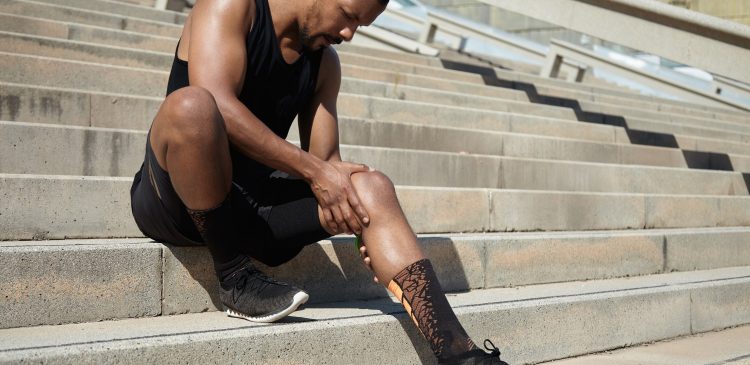
Are you feeling a lot of pain along your knees?
Experiencing stiffness or lack of motion? What may be leading to this stiffness/pain you ask? Osteoarthritis might be the culprit.
What is Osteoarthritis?
Osteoarthritis is a common cause of knee pain. It naturally occurs as we begin to age and is most commonly seen in those that are 50 years of age or older. Osteoarthritis can affect many joints in the body, but is predominately seen along the hips and knees. Your knee joint consists of the femur (thigh bone), tibia (shin bone) and patella (kneecap). The surface where these bones meet is covered with a smooth, shock-absorbing tissue called articular cartilage. This cartilage allows the femur and the tibia to glide smoothly on one another during movement. This cartilage can begin to wear away over time and leads to a surface that is rough in nature. This can cause pain, swelling, and stiffness along the joint.
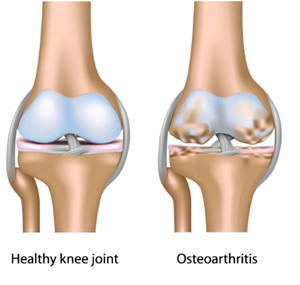
Signs and Symptoms of Osteoarthritis
Common signs and symptoms include:
- Pain – In the beginning stages you may notice pain during activity that subsides with rest; however, as the disease progresses, morning stiffness becomes more evident, as well as increased pain at rest
- Crepitus (grating sensation) – you may experience this when moving your knee
- Decreased range of motion – more noticeable after waking up in the morning or after being inactive
- Tenderness along the joint – your joint may feel tender to the touch when placing your fingers near it
- Swelling- this could be due to soft tissue inflammation around the joint
The Role of Physical Therapy and Osteoarthritis
With Osteoarthritis, your knee joint can become quite achy and may be limiting your overall function. Fortunately, physical therapy can help. Physical activity and exercise can help to relieve pain, improve strength and flexibility, and lessen stress along the knee joint. In addition to exercises, physical therapists can provide manual therapy that may consist of soft tissue and joint mobilization. These techniques will help increase blood flow, reduce inflammation/pain, and improve mobility. Overall, Physical Therapy can assist in minimizing the effects of the process of OA and allow for as much independence as possible.
Where to Go From Here
Slowly incorporating exercises of the appropriate type, frequency, and intensity is the best way to approach your knee pain. If you are unsure where to begin, you can start with these 4 exercises (see below).
Quadriceps Stretch-
Begin lying on you’re your front with your legs straight, holding the end of a towel/belt that is looped around one foot. Pull the end of the belt/towel over your shoulder on the same side of your body, bending your knee, until you feel a gentle stretch along the front of your thigh. Hold this stretch for 30 seconds and perform 3 times.
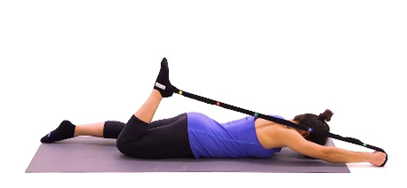
Hamstring stretch –
Begin lying on your back holding the end of a strap that is secure around one foot with your legs bent and feet flat on the floor. Straighten your leg with the strap and pull it toward yourself until a stretch is felt along the back of your thigh. Hold this stretch for 30 seconds for a total of 3 times.
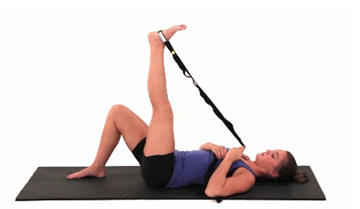
Straight Leg Raise-
Begin lying on your back with one knee bent and your other leg straight. Place a towel under the leg that is straight. Push down into the towel to engage your thigh muscles, slowly lift your straight leg until it is parallel with your other thigh, then lower it back to the starting position and repeat. Perform 3 sets of 10 repetitions.
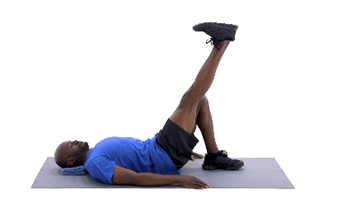
Bridge –
Begin lying on your back with your arms resting at your side with your legs bent at the knees and your feet flat on the ground. Squeeze your buttocks together and lift your hips off the floor into a bridge position. Slowly lower yourself back down to the starting position. Perform 3 sets of 10 repetitions.

Need Our Help?
No one body is the same, so if you are not feeling much relief with the exercises provided, you may benefit from an evaluation from one of our highly trained Physical Therapists to determine the best treatment approach for you. Call our Warwick (401) 384-6490 or North Kingstown (401) 329-0050 office today to make an appointment.
–
Author: Kayleigh McGregor, DPT
